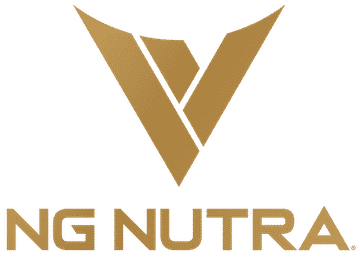I understand that this blog might not be groundbreaking with the latest science, exercise routines, and complicated workouts. However, here is a fact (at least to me). The things below have been the foundation since day 1. Exercise should NOT be complicated.
Go to the gym.
Move your body.
Go home.
Go back to the gym.
Move your body with a little bump in intensity.
Go home.
Go back to the gym again.
Move your body a little more.
Go home.
Repeat
Repeat
Repeat
Ok, I think I made my point. It’s not sexy and always fun. It’s like our careers, we show up every day and do the work. The end of the week we get a paycheck for the work we have done. After a year or 2, we get a raise for the hard work we have put in. Etc., Etc., Etc.
Our fitness is absolutely no different.
Strength training is a fundamental component of fitness that can offer us numerous physical and mental benefits. Whether my goal is to increase muscle mass, improve athletic performance, or simply boost my overall health, embarking on a strength training journey is a great way to achieve those objectives.
I detailed out some foundational stuff that even people at the highest level do. I am hoping this will help lay a decent foundation for a successful and rewarding journey towards increased strength and fitness.
Understanding Strength Training
Strength training, often referred to as resistance training or weightlifting, involves performing exercises that target specific muscle groups against resistance. This resistance can come from various sources, such as free weights, machines, resistance bands, or even your body weight. The primary goal of strength training is to increase muscle strength, size, and endurance.
Setting Clear Goals
Before diving into a strength training program, it’s essential to establish clear and achievable goals. These goals will help us stay motivated and focused on our fitness journey. Am I looking to build muscle mass, improve muscular endurance, or enhance overall strength and functional fitness? Defining my objectives will guide my training plan and exercise selection.
Creating a Workout Plan
A well-structured workout plan is key to success in any strength training. My plan should include a variety of exercises that target different muscle groups. A balanced routine typically consists of compound exercises (those that work multiple muscle groups simultaneously) and isolation exercises (those that focus on specific muscles).
For me, I typically do a particular workout routine for about 4 weeks and then I change it up. I get bored fast and like to do different things.
Compound Exercises: Building the Foundation
Compound exercises are the cornerstone of strength training for anyone. They engage multiple muscle groups, allowing our bodies to lift heavier weights and maximize our training efficiency. Here are some essential compound exercises to consider:
1. Squats: Squats are excellent for targeting legs, glutes, and lower back. They also help improve core strength and stability.
2. Deadlifts: Deadlifts work on the lower back, glutes, hamstrings, and traps. They are a fantastic full-body exercise.
3. Bench Press: The bench press primarily targets the chest, shoulders, and triceps. It’s one of the best exercises for upper body strength. Fun Fact – Mondays are known as ‘National Chest Day.’
4. Pull-Ups/Chin-Ups: These exercises are great for developing the back, biceps, and overall upper body strength.
5. Rows: Bent-over rows or seated rows target the back and biceps, helping to achieve a balanced physique
6. Push-Ups: A classic bodyweight exercise, push-ups engage the chest, shoulders, and triceps.
Isolation Exercises: Fine-Tuning The Muscles
While compound exercises lay the foundation, isolation exercises help fine-tune specific muscle groups. They can be beneficial for addressing muscle imbalances and achieving a well-rounded physique. Some popular isolation exercises include:
1. Bicep Curls: Targeting the biceps, this exercise helps to build those coveted arm muscles.
2. Tricep Extensions: Focusing on the triceps, these exercises contribute to strong and toned arms
3. Leg Extensions: Isolate the quadriceps with leg extension exercises for well-defined leg muscles.
4. Hamstring Curls: Strengthen the hamstrings to improve leg stability and prevent injuries.
5. Lateral Raises: Isolate the deltoid muscles with lateral raises, enhancing shoulder definition.
Proper Form and Technique
Maintaining proper form and technique is crucial in strength training. Poor form can lead to injuries and hinder your progress. It’s advisable to start with lighter weights to learn the correct form for each exercise. If needed, hire a personal trainer for a few sessions to get some guidance.
I have personally been exercising for over 20 years and I still hire a personal trainer 1 time a year to teach me anything new that they are seeing to help benefit overall strength and wellness.
Progressive Overload
Progressive overload is the concept of gradually increasing the resistance or intensity of the workouts over time. This progressive approach is essential for continuous gains in strength and muscle size. We can achieve progressive overload by increasing the weight we lift, increasing the number of repetitions, or adjusting the tempo of our lifts.
Rest and Recovery
Rest and recovery are integral parts of any strength training program. Muscles need time to repair and grow stronger after intense workouts. Adequate sleep, proper nutrition, and active recovery techniques such as stretching, or foam rolling are essential for preventing overtraining and injuries.
Just like everyone else…I don’t have every single meal prepared ahead of time. So I rely on protein shakes at least 1 time per day. I get sick of food and I feel these are a treat…especially the CHOCOLATE!!

I can NOT stress the importance of stretching enough…especially as we age, this is CRITICAL.
Nutrition for Strength Training
A well-balanced diet is vital to support our strength training goals. Ensure the body is getting enough protein to aid muscle repair and growth. Carbohydrates provide energy for workouts, while healthy fats support overall health and hormone production. Staying hydrated is also crucial for optimal performance and recovery.
Tracking Progress
Keeping track of progress is motivating and helps to stay committed to the strength training journey. Consider maintaining a workout journal to see past exercises, sets, reps, and weights used. Some people also take regular measurements and photos to visually track the transformation.
Staying Consistent
Consistency is the key to success in strength training. It’s essential to stick to your workout routine and gradually increase the challenge. There will be days when motivation is low, but pushing through those moments is what separates the dedicated from the casual.
If someone is completely new to exercising…I HIGHLY recommend taking it slow. We are working on creating a brand-new lifestyle. Overwhelming the body, time, etc. will not help to make this a permanent lifestyle change. We are running a marathon type of approach to this, not a 100-yard dash.
Slow and consistent.
Incorporating Rest Days
While consistency is crucial, don’t forget the importance of rest days. Rest days allow the body to recover and reduce the risk of overuse injuries. Aim for at least one or two rest days per week, depending on the training intensity.
The main thing in all of this…start showing up to the gym. The rest will start coming along and there will always be people around at the gym to lend a hand.
Happy Training!
Joel




